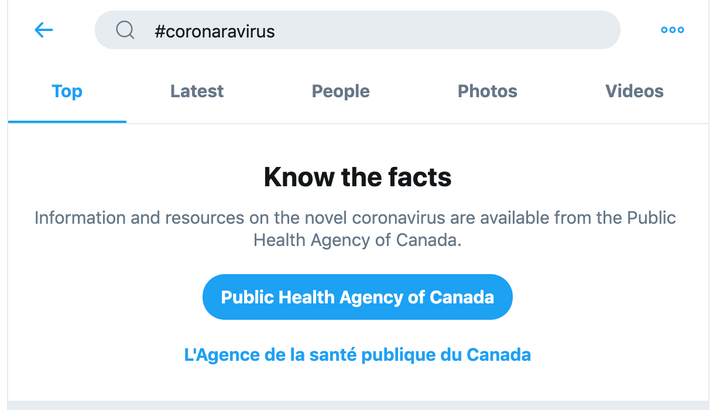As the novel coronavirus originating from Wuhan, China, continues to spread, so does misinformation around it.
From rumours of millions dead (which is not true) to the virus actually being part of a secret spy plot (also not true), there are dozens of rumours and hoaxes swirling around the outbreak. So far the virus has killed at least 132 people in China and infected at least 50 people in other countries, including three confirmed cases in Canada.
It’s easy to get fooled, and it happens to all of us. According to the 2019 CIGI-Ipsos Global Survey, 57 per cent of Canadians reported falling for fake news at some point or another.
But in this world where we want to know every update and detail of the outbreak, how do you separate what’s fact from what’s fiction? As we get more and more of our information from social media, it’s increasingly difficult to spot the difference, particularly when updates on the virus are constantly coming in from around the world.
But it’s more important than ever to ensure the news we’re sharing and responding to is legitimate. So here are a few tips you can employ when evaluating if something you see about the coronavirus is fake.
Who is the information coming from?
Make sure the information you’re getting comes from a source you know and trust. Random social media accounts with no followers or history of sharing verified news stories should always be taken with a grain of salt.
If you’re getting information from a website or social media account, News Media Canada recommends you follow the SPOT technique and ask yourself these questions.
S – Is this a credible Source?
P – Is the Perspective biased?
O – Are Other sources reporting the same story?
T – Is the story Timely?
Often this involves assessing if the author of what you’re reading is a real person with credentials. Have they written news stories before for a legitimate outlet? Many of the hoaxes circling around the coronavirus come from users verified on Twitter, so you shouldn’t rely on that alone.
WATCH: Guessing game: Are these news stories true or false? Story continues below.
Check their author bio, check their sources. Reporters have to get the information they share from somewhere — is the person reasonably informed on the topic? Do they seem to have legitimate sources?
No matter who the information is coming from, ask yourself these questions when you evaluate what you’re reading, and you’ll be on your way to making sure you aren’t duped by a hoax.
What is the story?
If you see a story on social media that seems too wild to be true, step back and consider why that is. Have reports of the death toll from the virus jumped from dozens to hundreds of thousands all of a sudden? It’s probably good to take a moment and assess why that is and if that’s true.
Similarly, if you’re just seeing screencaps of headlines rather than stories themselves, it’s best to get to the source. In a 2019 report, the research institute Data and Society said social media users ought to be wary of people using evidence collages and a number of other techniques to spread misleading ― or outright false ― information.
And if you aren’t sure if what a story is telling you is true or not, check to see if it’s been debunked already. Reporters like Buzzfeed’s Jane Lytvynenko and websites like snopes.com are great for compiling debunked hoaxes, and they’re constantly updating their lists with the latest bout of misinformation.
When is this from?
Check the date on the story or post. In times of crisis like this, old stories and photos are often repurposed to spread information.
For example, that video of a woman eating a bat rumoured to be related to the virus was actually filmed three years ago, and wasn’t even filmed in China.
Does an image look oddly familiar? Often the same images and conspiracy theories resurface around global news events, even when they have absolutely no connection. It’s best to always check the date.
Where is the news coming from?
Does the url of the site you’re directed to seem fishy or unfamiliar? That should give you pause.
Merrimack College assistant professor Melissa Zimdars has compiled a list of frequent sources of fake news and misinformation. Check if the source you’re referencing is on this list. If it is, it’s likely not real.
WATCH: Malaysia arrests five for spreading misinformation online. Story continues below.
If you’re looking at social media, go to the source of whatever’s being shared. Both Facebook and Twitter say they are clamping down on misinformation on their platforms, but things still slip through the cracks.
At the end of the day, it’s best to go straight to the primary source. When it comes to the coronavirus, the Public Health Agency of Canada is regularly updating its page with the facts and figures of the outbreak and the most relevant information to Canadians. That’s your best resource for up-to-date information on what you need to know.
Twitter even knows it — if you search #coronavirus, the platform will direct you straight to the page.

Things are changing by the day, and it’s important to stay informed. Make sure you’re doing it right!